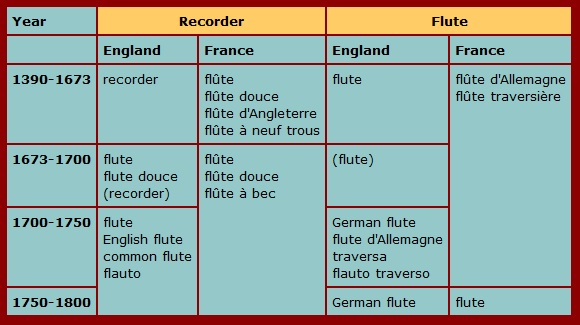Music Cataloging at Yale ♪ General music cataloging resources
The flute produces its sound from the flow of air across an opening. Modern flutes are usually made of metal and have keys that are depressed over the tone holes. Previously, the flute was called traverse flute (indicating how it was held), or included that word in other languages, e.g., traversa, traverso, etc.
The recorder has a fipple or whistle mouth piece, with a thumb hole and seven finger holes, rarely with keys. The recorder played an important role in the Renaissance and Baroque eras, and was revived in the 20th century. The use of the English word "recorder" (thought to be derived from the Latin recordari) dates back the the 14th century. In other languages, the name for the recorder includes a cognate of the word "flute," e.g., flûte, Flöte, flauto, or flauta, etc., which may make for confusion over which instrument is meant. Some of the names for recorder in French, German, Italian, and Spanish are:
- French: flûte douce, flûte à bec
- German: Blockflöte
- Italian: flauto dolce, flauto a becco, flauto diritto
- Spanish: flauta dulce, flauta de pico
David Lasocki, former music librarian and scholar in the field of historical woodwind playing, created this guide to pre-19th century English and French music publications. The chart indicates whether the word "flute" or its foreign language equivalent actually means "recorder" or "flute."
When is a "flute" not a flute
by David Lasocki, Indiana University
provisional version from 1997
